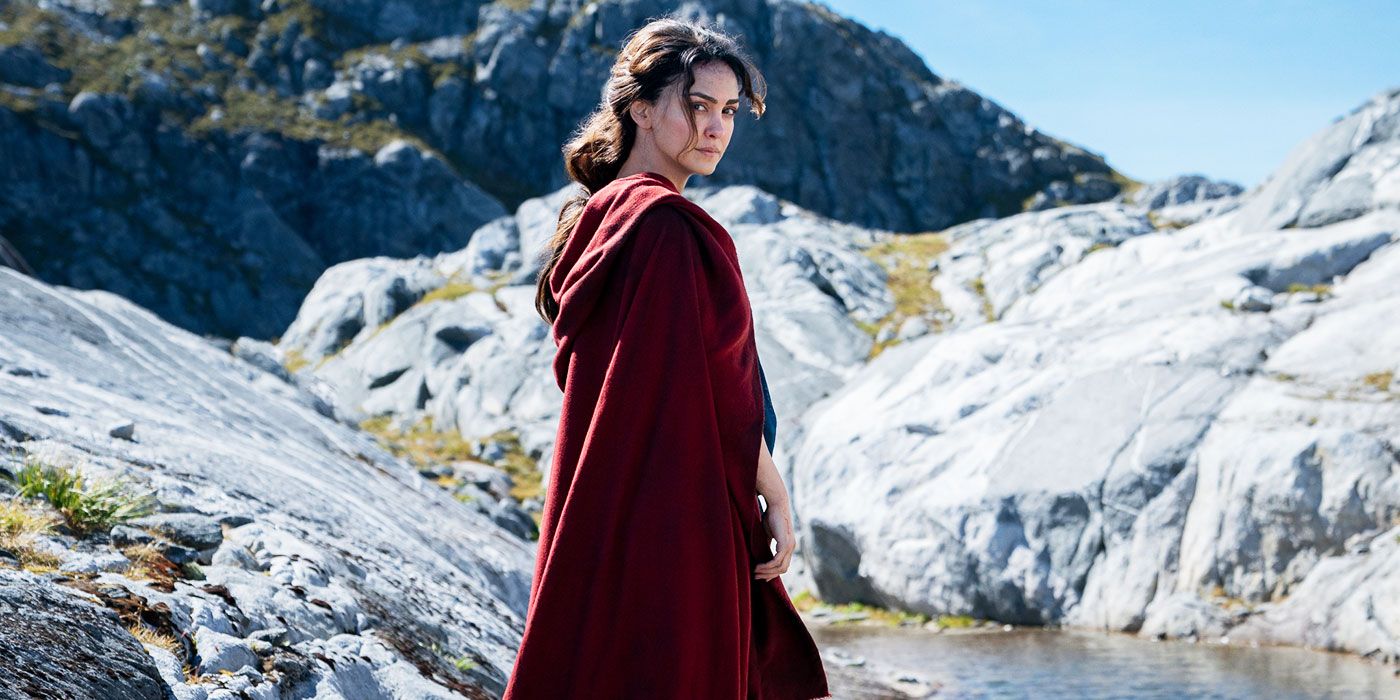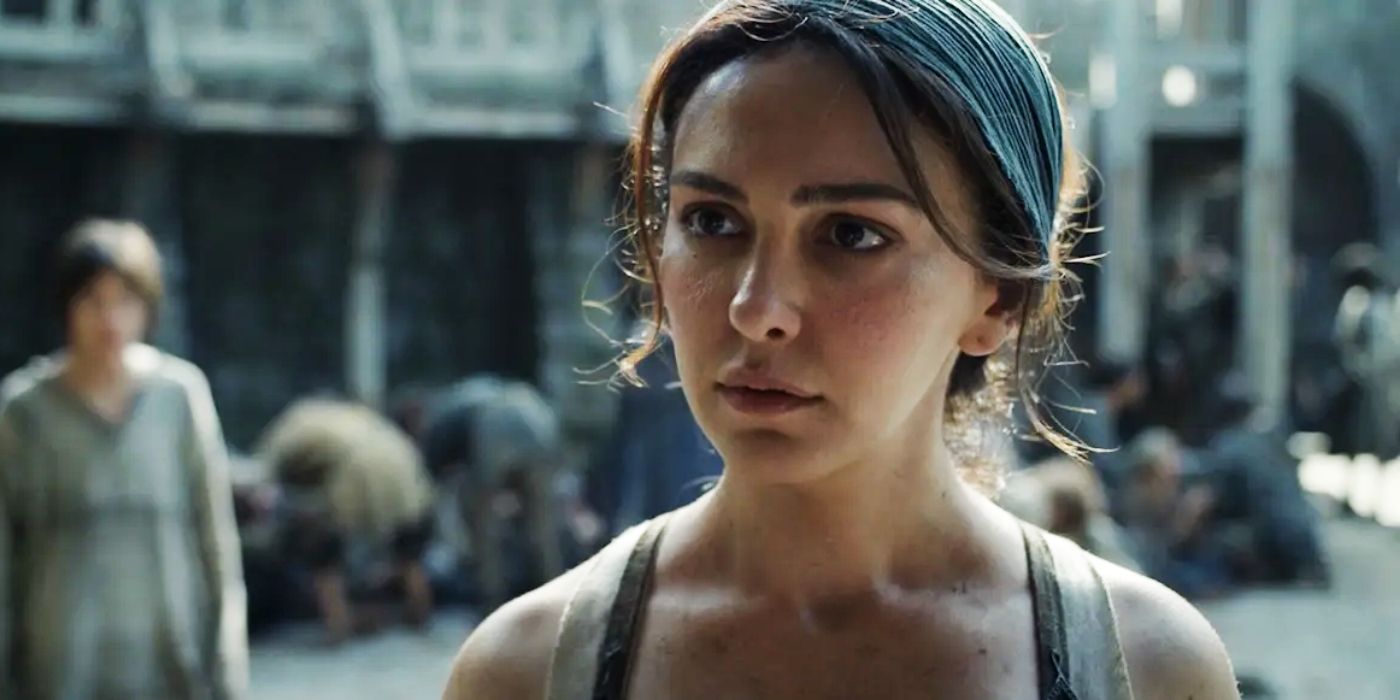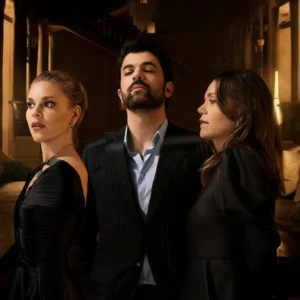
Editor’s note: The below contains spoilers for The Lord of the Rings: The Rings of Power Season 2.
The return of The Lord of the Rings: The Rings of Power for Season 2 reunited us with familiar faces from Middle-earth — Galadriel (Morfydd Clark), Elrond (Robert Aramayo), Durin (Owain Arthur) and Disa (Sophia Nomvete) to name a few. It also introduced us to some new characters, like Ben Daniels’ Círdan, and even features one familiar face wearing a new form. But while the series features a wealth of characters we do see, the season’s third episode, “The Eagle and the Scepter,” was also notable for one character we don’t see, and that is Nazanin Boniadi‘s Southlands healer Bronwyn. After it was revealed that Boniadi would not be returning for the second season, the question then became what would happen to her character, and Season 2 finally gave us our answer.
What Happens to Bronwyn in ‘The Rings of Power’ Season 2?

In Season 1 Episode 6, “Udûn,” as Adar and the Orcs descend on the Southlands, Bronwyn is struck with an Orc arrow in the shoulder. She’s quickly caught by Arondir (Ismael Cruz Cordova), the Elf tasked with monitoring the Southlands, and more importantly, the Elf who loves her, and who she loves back. Initially, it seemed like the sort of dramatic contrivance we see in romantic arcs all the time. Before the battle, Bronwyn and Arondir plant some of the alfirin seeds she gifted him as part of an Elven tradition, to build “new life in defiance of death.” As they do, they plan for a life together, along with Bronwyn’s son Theo (Tyroe Muhafidin), once the battle is over. The severity of Bronwyn’s injury throws a wrench in those plans. That is, until Arondir uses the alfirin seeds to heal her wound, getting rid of the “foulness” of Orc arrows, as Arondir puts it — or so he thought.
When we first see Arondir in Episode 3 of Season 2, he has just rescued Isildur (Maxim Baldry) and his new friend Estrid (Nia Towle) from a group of wildmen, then tersely tells them they can either leave or follow him to Pelargir, but that he has matters of his own to attend to. The matter in question is, tragically, Bronwyn’s funeral. He later reveals to Isildur that she wasn’t able to fight off the damage caused by the Orc arrow after all, and succumbed to her wound, leaving behind a devastated son and a devastated lover, whose relationship with one another is now rocky, to say the least.
Why Did Nazanin Boniadi Quit ‘Rings of Power’ Season 2?
On May 31, 2024, Boniadi revealed on her Instagram account that she had chosen to step away from The Rings of Power for Season 2, and clarified that the decision was “unrelated” to her later decision to focus on advocacy work. However, an earlier post for her upcoming film Mosquito in the Ear revealed that Boniadi had largely retired from acting in September 2022 in order to focus on advocacy work around Iran’s #WomenLifeFreedom movement, which also took off around the same time:
“I stepped away from acting in September 2022, to focus solely on the #WomanLifeFreedom uprising in Iran and to advocate for the people of my homeland who have been risking everything for freedom. Despite my passion for acting, I knew it would take a very special project to convince me to once again split my time between my day job and my calling as an activist.”
With all this in mind, her exact reasons for stepping away from Rings of Power aren’t clear, as Boniadi reveals the decision to leave was not informed by her activism. She did, however, mention that she related deeply to Bronwyn for the values the two of them shared, saying:
“Throughout my career, the values I have held most dear are honesty, empathy and integrity. My character Bronwyn was committed to these same ideals in striving for a fairer world, which is why I connected so deeply with her.”
Making the tough decision to walk away because you know there are people out there who need the kind of help you can give them? Bronwyn would indeed be proud.
What Is the Woman, Life, Freedom Movement?
On September 13, 2022 in Tehran, Iranian authorities arrested 22-year old Jina Amini (known more commonly in the press by her government name Mahsa Amini, as non-Iranian names cannot be registered in Iran) for “improper hijab,” handing her into the custody of the “morality police” who subsequently beat her so badly she was transferred to an ICU, where she died three days later.
Amini’s death proved to be the catalyst in sparking a massive wave of anti-government protests in Iran, most visibly symbolized in young women’s refusal to wear the mandatory hijab in public, though the broader concern was opposition to 45 years — now 47 years — of the Islamic Republic’s theocratic rule over Iran. The protests were tragically marked by the execution of countless young people, either “officially” or as the result of horrific abuses by the authorities. The protests also resulted in a massive number of solidarity protests across the world, all rallied under the phrase “Woman, Life Freedom” — taken from the Kurdish freedom movement’s slogan “Jin, Jiyan, Azadî,” and translated by the Iranian diaspora as “zan, zendegi, azadi.”
It would take far more space to summarize the entirety of the Woman, Life, Freedom movement, as it kicked off nearly two years ago, and is still ongoing in Iran. The government continues to punish and execute those affiliated with it. The most recent high-profile example of this is the jailing of singer Shervin Hajipour, whose Grammy-winning song “Baraye” became the anthem of the Woman, Life, Freedom movement.





